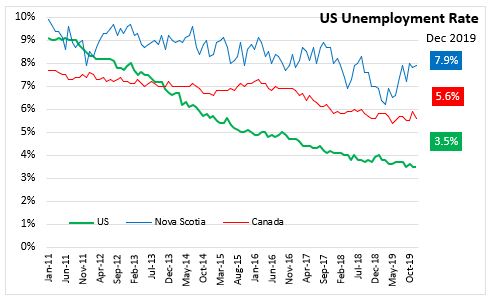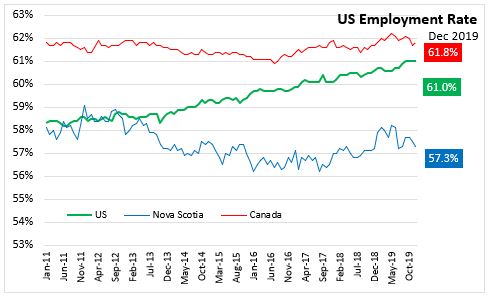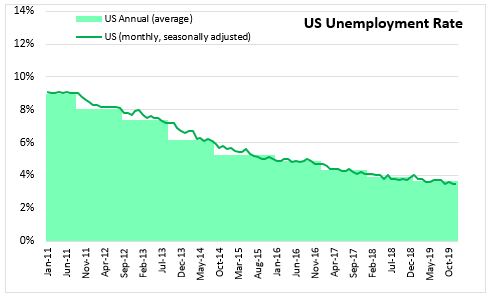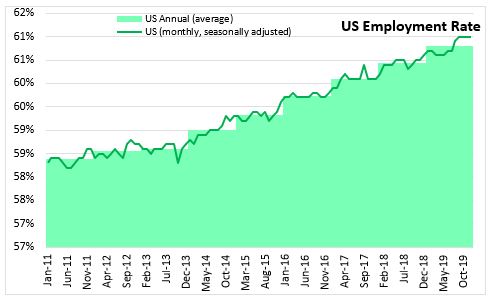The Economics and Statistics Division maintains archives of previous publications for accountability purposes, but makes no updates to keep these documents current with the latest data revisions from Statistics Canada. As a result, information in older documents may not be accurate. Please exercise caution when referring to older documents. For the latest information and historical data, please contact the individual listed to the right.
<--- Return to Archive
For additional information relating to this article, please contact:
January 10, 2020US EMPLOYMENT, DECEMBER 2019 AND ANNUAL The US Bureau of Labor Statistics reports today that US non-farm payroll employment increased by 145,000 in December. Revisions to the last two months show a smaller gain of 256,000 in November and the October result was revised down to 152,000. December's employment increase was below the average of the previous 12 months that saw average monthly increases of 183,000.
US employment gains in December were reported for the following sectors: retail trade (+41,000), leisure and hospitility (+40,000), health care (+28,000). Employment declined in mining sector by 8,000. There was little change in the other major sectors of the economy: construction, professional and business services, manufacturing, wholesale, transportation/warehousing, information, financial activities, and government.

The US unemployment rate remained at 3.5 per cent in December. Unemployment rates across most advanced economies (including Canada and Nova Scotia) are at levels below long run averages.

The US participation rate remained 63.2 per cent in December. Unlike unemployment rates, the US participation rate has failed to return to pre-recession levels and has only increased modestly since bottoming out in 2015, with fluctuations around a narrow range since the start of 2016.
Participation rates in Canada and Nova Scotia also declined in the years after the global financial crises, with further declines since the beginning of 2018.

The US employment to population ratio was unchanged at 61.0 per cent in December. The US employment rate has maintained a very gradual upward trend since the middle of 2013.
Employment rates in Canada trended up in 2016 and 2017, but remained below levels observed in 2008. In December the employment rate was up 0.1 per cent at 61.8 per cent in Canada. With an aging population and declining labour supply, Nova Scotia's employment rates have trended down since 2012. There has been some recovery since late 2017 with the Nova Scotia employment rate at 57.3 per cent in December 2019.

The average US employment level rose by 2.1 million in 2019 to 151.4 million compared to an increase of 2.7 million in 2018. The unemployment rate averaged 3.7 per cent in 2019 compared to 3.9 per cent in 2018.
The participation rate was up 0.2 per cent compared to the previous year at 63.1 per cent in 2019, while the US employment rate rose by 0.4 percentage points to 60.8 per cent in 2019.



Note: Canadian and US labour force statistics refer to different working-age cohorts.
Source: US Bureau of Labor Statistics, Statistics Canada Table 14-10-0287-02
<--- Return to Archive